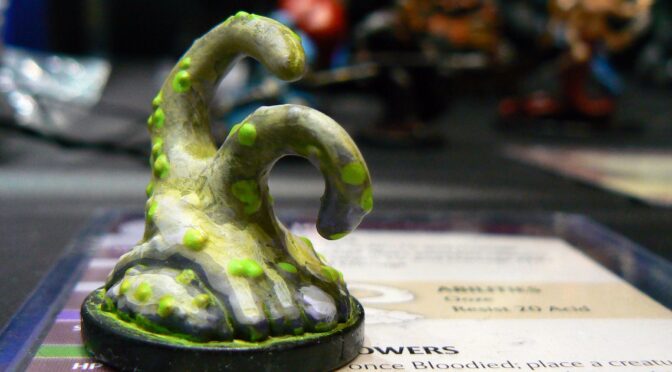A small number of the monsters in the Fiend Folio: Tome of Creatures Malevolent and Benign are what I call “aggregate monsters:” creatures composed of a group of living organisms. Aggregate monsters provide a micro-example of a phenomenon underrepresented in Dungeons & Dragons (D&D) mechanics: the aggression of groups rather than individuals. In this article I describe how D&D frames dangerous entities in terms of their engagements with players, which D&D inscribes into its game mechanics as a ritual called “the encounter.” I then analyze how the encounter separates Players and Monsters, defining Monsters as Other and thus limiting the detail with which the game’s mechanics can represent them as social beings.
There is an aggregate monster in the famous cover image of Hobbes’s Leviathan, where a group of human figures standing on top of each other form the torso of a giant king. We can also find aggregate monsters in such other artefacts as Clive Barker’s horror story “In the Hills, the Cities” wherein two villages form aggregate bodies by standing on top of each other in a physically precarious configuration, and then ceremonially wrestle, as giant bodies composed of smaller bodies.
Leviathan‘s illustrator, Abraham Bosse, used the aggregate monster to represent the corporation that is the body of humans acting as a state. Much political philosophy has since debated, both descriptively and normatively, the structure of the corporate state. Do humans act in concert as the result of a social contract developed for our mutual benefit? perhaps out of fear of the “war of all against all” that anarchy would produce? Is there a state of nature where in some primitive societies the social contract is absent or less sophisticated? These difficult questions emerge from a contemplation of realistic corporations in all their complexity.
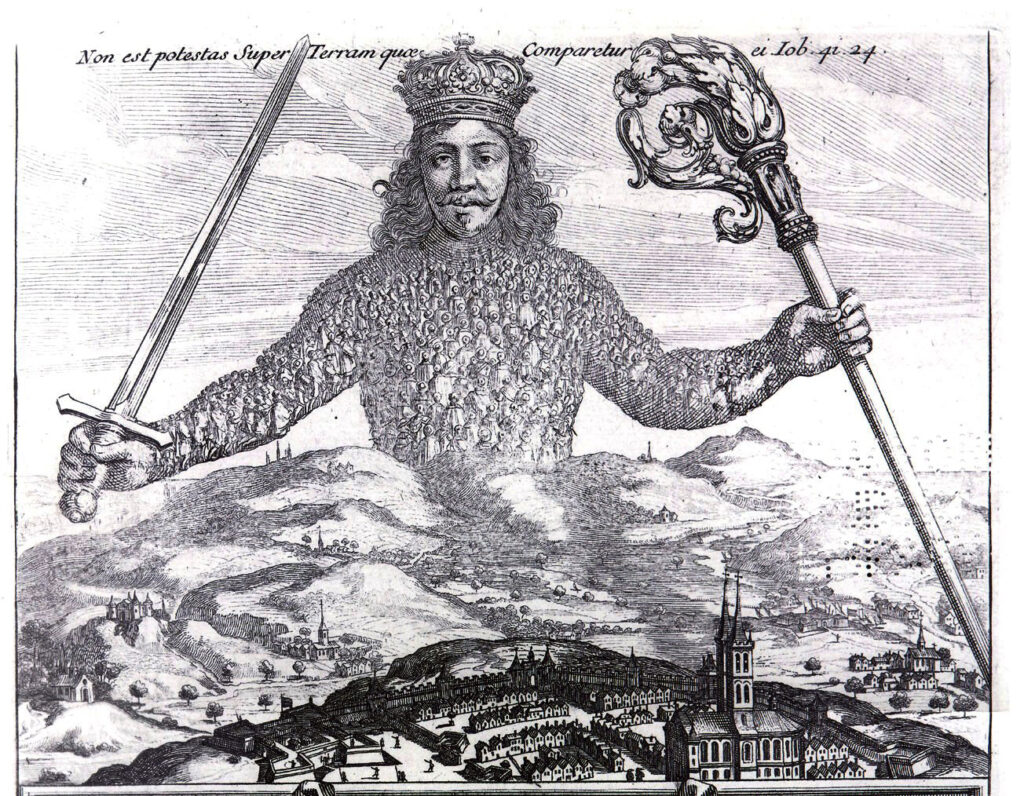
The Encounter
As the canonical artefact of tabletop role-play, D&D largely sacrificed such realism, instead representing monsters using a ritual event called the “encounter,” where entities appear to players as a challenge, often through combat. In the words of the Fiend Folio:
As in other collections of the same nature, the term “monster” has two different meanings in the Fiend Folio Tome. Its first – and more important – meaning is to designate any creature encountered, hostile or otherwise, human, humanoid or beast. Thus the term is used generically to signify the subject of an encounter; until the party of adventurers are certain what they have met, it is a “monster”. The secondary use of the term is the more traditional one – to signify a wicked or horrible creature of some sort.
The fundamental feature of the encounter is that it has a limited ecology. It is separate from the continuity of the rest of the virtual world, cutting the foreground of the challenge at hand from the background that instantly becomes calcified as narrative backstory to the challenge. This division is analogous to the difference of work done in film by live actors as opposed to a fixed background painting, whose distance from the audience reduces its duties of detail or movement. The encounter reduces the cognitive load on the game master that would otherwise be necessary to entertain a comprehensive understanding of the backstory, the virtual interacting forces from which the encountered entities emerge. During the encounter, societies of trolls, kobolds, etc, become abridged. As with whales known to whalers as hulks hunted on the surface, one does not dwell upon the submerged social life of the Aboleth, nor is such consideration likely to impact the encounter. Yet the encounter is D&D’s primary ludic method of representing monsters.
As Moldvay, Gygax and Arneson write:
When a party descends into a dungeon for the first time, they must be ready to deal with the strange creatures they will meet, some foul, some fair, some intelligent, some not; the variety is endless. Such a meeting is called the encounter.
In the encounter, the measure of in-game time shifts from 10-minute “turns” to 10-second “rounds.” During each round players choose from a range of rule-based actions—fight, run, talk, etc.—of which “fight” is governed by relatively extensive explicit rules. However, if a conversation rather than a fight breaks out, the result is a more open-ended piece of improvised theatre, in which the Dungeon Master plays the parts of all the monsters and the players each play their character. In both cases the thoughts and backgrounds of monsters typically receive a fraction of the detail a player gives their character, owing to the Dungeon Master needing to split their attention among any monsters and other entities in the game environment.
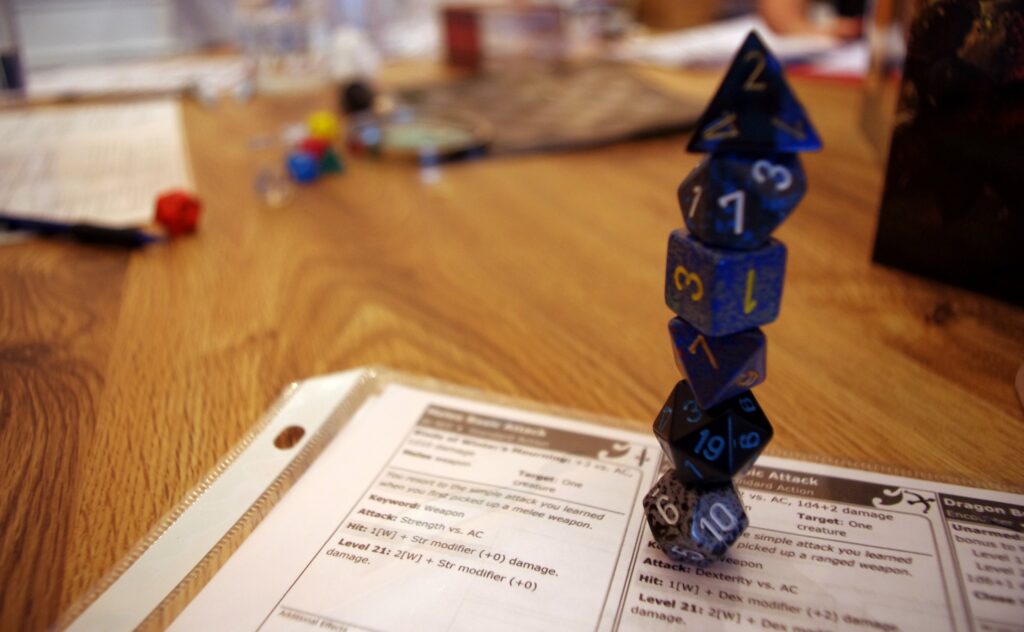
Thus, the scope and depth of D&D’s representations of the encountered monster are limited by a cognitive asymmetry between player and non-player character (“NPC”). Despite being driven by a human, the dungeon master, just as the virtual avatars of the players are driven by humans, the inner lives of encountered monsters do not enter discourse the way the inner lives of the players take centre stage. This is not true by definition, but rather in practice. As a device of procedural rhetoric, the encounter discourages players from in-depth observation of the entities they encounter, because there is relatively little to observe and much to interact with; in this respect the encounter is narcissistic and even callous. In some ways it is analogous to Neil Strauss’s The Game, which has done an epistemic violence and ultimately contributed to relational violence by encouraging the widely-criticized male subculture of the “Pick Up Artist” to encapsulate their understanding of women in terms of how women respond to specific forms of encounter. The phenomenology of the D&D encounter contrasts with the aesthetic experience of, say, a Minecraft world “being itself,” the sense that this world has existed before the player and will continue to do its thing afterward. In the D&D encounter, the question of whether the ecology of the virtual world is sustainable or tends toward a certain homeostasis is irrelevant because such information becomes available only through its utility to the player, whose interest is narrative rather than ecological. Thus, the encounter militates against empathy with the natural world. We can say that the encounter is objectifying; yet, to specify further, we should say that it is “momentarizing,” distilling the encountered entity to the moment of its encounter, epistemically robbing it of past and future.
Despite its potentially paidiac affordances in allowing players to drive an emergent narrative away from a pre-established script, D&D presents the encounter less empathetically than the war games that were its forebears. War games have a certain symmetry—opponents do not exist “just for you,” just as you do not exist just for them. Rather, opponents must be understood as agents with intentions and motivations. Heuristics can then be applied about the behaviour of opponents, leading to strategic paradigms such as min-maxing—assuming the opponent will act to maximize their own gain, and planning accordingly for one’s own benefit—but even such paradigms assume that one shares certain fundamental properties with one’s opponent. The ability to empathize, as a way of “knowing one’s enemy,” has a place in war games that it does not have in D&D.
Instead, the D&D encounter divides the social landscape into two fundamental types: Monsters and The Party. The Party is the first class of citizen of the gameworld, while its ethics toward the monsters outside of its number is a matter of relatively abstract consideration, a thought experiment, in contrast to the players’ ethical obligations toward other party members. The margin separating Party from Monster should be problematized in today’s political climate, where, for example, the escalating factionalization of U.S. politics is a major problem. To some degree learning to empathize with Some and not Others is a recognizable pattern among many social groups; yet the importance of non-empathy toward near neighbours has now entered the mainstream. It has been both embraced and critiqued in vernacular discourse, for example through the meme of the NPC as dehumanized representation of those deemed incapable of comprehending one’s state of enlightenment, of red-pilledness, of agency or intentionality however misguided.
While the concerns of the political sphere may seem far away from the social dynamics of imagined monsters, we must understand the line between Party and Monster as discursively constructed through the conventional practices of tabletop roleplay, just as the line between Self and “NPC” is constructed in social media. Underlying both constructions is the desensitizing mechanic of a gamified adversarial event where the Opponent seems to exist not for their own purpose but rather to provide the service of actualizing the Self as an agent meeting a challenge. In their collaborative Party structure, D&D’s encounters occlude the dark pattern that is their asymmetrical objectivization of the Enemy. Since as players we usually encounter monsters when they are fighting us, we gain relatively little insight about how they interact with each other.

Against Monsters
The anti-monster jingoism of D&D lends the game a simple appeal as a system, just as the binary division between bad orcs and good (white) men structured the battlefield encounters staged in Tolkien’s fiction. There exist many critiques now of the use of monstrous tropes by authors, especially privileged and male; such critiques show how actual groups of humans have been abused through figuration as inhuman. A strong general case could be made that most monsters are not completely virtual, but rather emerge from, and function to some degree as, representations of agents in the real world. The idea that there is fundamentally no such thing as a truly virtual monster accords with the positions of many prominent thinkers, from Hobbes’s contention that cognitions and imaginations are transductions of the energy taken in by the senses, to Lakoff and Johnson’s “experientialist” idea of embodied cognition, where our sensations constrain the metaphors we are capable of deriving, which in turn constrain both the scope of our creativity and the scope of our capacity to conduct good-faith discourse.
If we accept that virtual monsters are necessarily inspired by sensed objects, the descriptive debate over the construction of the monstrous becomes a matter of determining which monsters represent which actual human traits; while the normative debate tends to focus on distinguishing “regressive” tropes—that, say, associate monstrosity with femininity—from progressive monsterizations, such as those which explore the fear, danger and monstrous capacity of, say penetration and subsequent childbirth. However, in general, or for the specific cases of monsters whose inspirational genealogy remains difficult to pin down, or in the off chance that there is such thing as a completely virtual monster imagined independent of memory or stereotype, there remains the question of whether the trope of monsterization itself is ethically flawed.
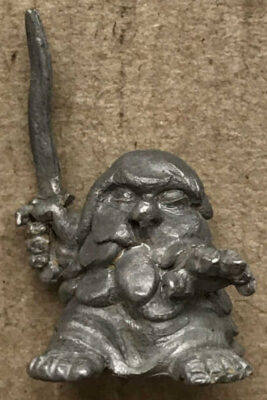
Is it wrong to think of some entities as monsters? Or, even when certain individuals seem to earn their status as objects of constant opposition and revulsion, is it wrong to reinscribe the implicit procedure of treating some entities as monsters? An actual human interlocutor who describes their world as populated with as many individual monstrous entities as can be found in the Fiend Folio would seem, in most actual quotidian situations, likely to lack insight into their own character. Is the grimdark perspective suggested by the sheer diversity of dangers evident in the Fiend Folio compatible with the heroic narrative of a party overcoming adversity?
In contrast to the scenario of, say, The Witcher and especially The Witcher III, in which monsters predominate in part due to the mass chaos and death of a world war—and where the existence and nature of the difference between monster- and not-monster is a central question of the entire series—D&D has a saviour complex.
When the world is grimdark, the protagonists, the party, need not be, and can in fact simultaneously acquire great power and do great things. The eponymous Witcher, on the other hand, is forever homo sacer, tainted and excluded as a social consequence of the work he does and the physiological changes he has undergone to do it. In general, relative to other systems of fiction and roleplay, which develop characters in explicitly or implicitly more multivalent ways, D&D and its expansions maintain an impoverished system of moral personology—the famous Greimas square composed of good-evil and chaotic-lawful axes—while releasing much larger volumes of material articulating the types of monsters in the world. This is a system far more developed in regard to the monster without than the monster within.
The Gygaxian simplification of the self is the counterpart of the monsterization of the other, as reflected in the ritual practice of the encounter. By importing morality into game mechanics, D&D’s ludic representation of the player’s moral agency actually frees the player from the cognitive consequences of moral implicature. In other words, ludic morality is amorality. Player-characters have the privilege of a concrete metaphysical framework in which evil is as valid as good, and in fact has the same measured structure. D&D’s idiom does not facilitate ludic representation of asymmetrical moral questions like “is evil a presence in itself, or an absence of good?” Good and evil are both treated as banal, but banal in an equivalent manner that degamifies and erases experiences of self-recrimination for having acted opposite one’s own ideals. The amorality of moral ludification insulates players from reckoning with the shame of acting contrarily to their own moral standards, and instead construes right according to a type of might quantized on a small number of personological axes. An unashamed serial-killing necromancer may as well be good by their own lights, and may be evil only in a dramatically ironic, meta, sense. By purging moral relativism, the ludification of evil pre-absolves moral implicature through a simplistic choice of a moral faction.
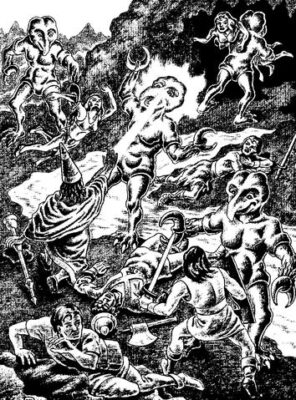
D&D’s morality mechanics, which demystify the natures of good and evil, impede moral questioning as a mode of thought. In contrast, the actual world offers “players” ingredients such as the following, whose mixing and matching facilitate moral investigation: (1) privileged knowledge of the inner life of one agent, the self; (2) the desire to do good; (3) the lack of a third-party or absolute arbiter of good; and (4) the capacity for reflexive understanding of the other in terms of the self. Among these four ingredients, the ritual of the encounter cuts rations of the last two. However, when a party of players encounters a party of monsters rather than a monster in isolation, similarities between player and monster become reintroduced. The case of the aggregate monster offers an intermediate concept between monster-as-individual and monster-as-party.
The Folio‘s Aggregates: Algoid, Cifal and Protein Polymorph
To observe an aggregate monster is to observe an entity as a state of relations. One of the ironies of Barker’s “In the Hills, the Cities” is that, while the aggregate giants behave as cognitively impaired brutes, the individual humans that compose them retain the ability to suffer as small vulnerable individual bodies once the aggregate body falls apart. There is a tension between the corps and the corporation. However, Barker, too, oversimplifies. A human body is not corps or corporation, but a duality consisting simultaneously of both. Yet it is difficult to engage with both at the same time; it is a difficult ethical and emotional task, for example, to simultaneously treat a telemarketer as: a human, capable of registering extreme negative feedback as abuse; and an instrumental component of a hostile corporate entity. The difficulty receives additional amplification in the case of the encapsulated and challenging Encounter, which combines the simplified strategy of the war game, with the asymmetrical realpolitik of the exclusive clique. Between the two, there is little space for the corps-corporate duality.
On some scale we are all aggregate monsters, corpses incorporating; yet some monsters display their sociality and multiplicity more observably than others. In D&D three types of monsters have the flavour of multiplicity. The first is the category of social monsters in general, including humans, which tend to appear in packs. The second is the category of aggregate organisms, groups consisting of fungi, molds and other colonies of cells or spores. In contrast to the aggregate organisms of the Monster Manual, the three in the Fiend Folio—the Algoid, Cifal, and Protein Polymorph—tend to assume a Leviathan-like anthropomorphic shape. The third category of monster multiplicity is that of “oozes,” including “slimes,” “jellies,” and “puddings.” (The most iconic of the oozes is the gelatinous cube).
The behaviour of oozes shows a general conundrum in D&D’s conceptual framework for multiplicity. In contrast to D&D’s usual level of biological representation, the ooze defies the logic of monsters as demarcated bodies. The bodies of oozes are comprehensively dividual, non-quantized. For example, although the Gelatinous Cube seems too stupid to be sentient, what sentience it does have is distributed throughout its matter such that no aspect of its agency or intentionality is beholden to any one organ whose failure would jeopardize the rest of the body. The Black Pudding takes things one step further, separating into multiple Puddings when cut. (while its relative, the Ochre Jelly, similarly partitions when struck by lightning). In such characteristics the ooze literalizes Deleuze and Guattari’s “body without organs.”
Yet the monstrous ooze shows a Body Without Organs that is inherently disembodied. The Body of Ooze is disposed to certain quasi-intentional behaviours—mostly eating—and it has (virtual) (physical) substance, yet the composition of its substance does not impact its trajectory of action. It has no mouth, and yet it must eat; it has no brain whose resection would bring an end to its drive to do what it wants to do (eat). Sensitivity to the internal life of a gelatinous cube is completely useless—the Cube’s dangerousness is in no way mitigated by an understanding of its intention or thoughts, if indeed it has any. There is no (kinaesthetic or somatic) empathy to be had with the body of the gelatinous cube. As with Lovecraft’s monsters, crazymaking to the narrators who recount of them, little good can come of contemplating the Cube’s internality. It is a dualist, intellectualist fantasy of a danger; an autonomous body directed by a teleological and physically autonomous mind. D&D reduces the internality of the ooze to magic, as part of a general reticence to engage with the mechanics of sociality among multiplicity—in short, of ecology.

It is for the same reason that we find the Fiend Folio‘s multiorganismic aggregates defaulting to anthropomorphic forms, which, in the ritual of the encounter, appear and die as suddenly as a goblin bled out in a knife fight; even where the “bleeding” seems in the flavour text to mean the passing of many insects (in the case of the Cifal) or algae (in the case of the Algoid) back into their ordinary, dispersed, state of nature. Matters of intra-species diversity, of the structure of conspecific relations organizing the swarm, are the overly complex matter that the ritual of the encounter must liquidate. You may have heard of missing the forest for the trees, but what of the swarm and the dances of bees? It is the latter for which the Fiend Folio offers game masters little support.
Even so, the Fiend Folio‘s aggregate monsters possess an ecological interconnectedness that sets them apart from Bodies of Ooze. The algoid seems to embody the collective will of the forest—not only is it a momentary composition of algae into humanoid form, but it also possesses the special power to control groups of trees. In the case of the Cifal, the “binding force” assembling its component organisms does not extend to organisms beyond it; however in this case too, the drive to compose a macro-organism seems immanent to the swarm rather than derived from possession by outside magic.
While challenging the boundaries between entity and environment, being composed of a swarm of microorganisms also provides some aggregate monsters with a special power to reconfigure and transform themselves. This is most apparent in the case of the Protein Polymorph, a homogenous mass of single cells which can assume the appearance and behaviour of a wide range of living creatures. Where players transform themselves over the long duration of a campaign, the protein polymorph, too, has a tremendous capacity to change. However, this open-ended ability is in practice constrained by the polymorph’s typical goal: to engulf, crush and eat other beings. Despite having nominally average intelligence—it is as smart as many player characters—the life cycle of the polymorph is constrained by its status as a monster, who changes not according to a long trajectory of personal development, but as a method of ambush, of taking initiative in the encounter. Imagine the adventures on which a polymorph might embark, were it motivated by goals beyond simply eating!
Conclusion
Given the elegance with which the many parts of D&D’s mechanics reinforce each other to create the simultaneous feelings of descriptive specificity and normative open-endedness, it should not be surprising that aggregate monsters fit awkwardly into the game’s network of ludic representations. By orienting gameplay around the ritual of the encounter, which makes monsters out of creatures and a Party out of players, D&D reduces its capacity to represent the systemic and unconscious facets of corporate behaviour (and especially behaviours of corporate combat), which undermine moral agency throughout many actual-world human conflicts. With the extent of its ludic representations thus limited, D&D’s expansions have produced a litany of ecologically alienated monsters, which mean little to each other, but together compose a dangerous Other for the player-character’s impoverished Self.
D&D’s design philosophy began as that of a libertarian utopia. D&D’s ruleset is supposed to be:
[…] completely open-ended, […] subject to modification, expansion, and interpretation according to the desires of the group participating, and […] in general not bounded by the conventional limitations of other types of games.
Such a dream of copious affordance has doubtless contributed to the many newer roleplay systems which have improved upon D&D’s legacy. Yet I think, if we look closely, that we will find lingering the legacy of the monster as encountered being, and the question of how to imbue our “monsters” with an internality reserved from encounter, withheld, refused to intervention yet still eminently present, as an essential ethical struggle for roleplay designers now even as it could always have been.
Featured Image is “That ochre jelly isn’t ochre!” by Benny Mazur @Flickr CC-BY.
–
Matt Horrigan is a doctoral student at Simon Fraser University’s School for the Contemporary Arts, living and working on unceded territories belonging to the Tsleil-Waututh, Squamish and Musqueam first nations. Coming from a background as a musician, theatre maker and multidisciplinary artist, Matt’s research examines the social infrastructure of art scenes through the lens of game studies, and games through the lens of social theory. Matt lives in one of Vancouver, BC’s many collective houses.

